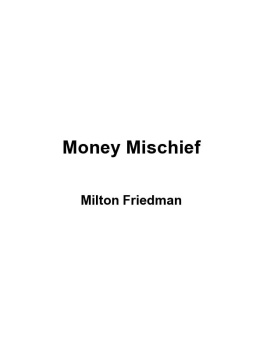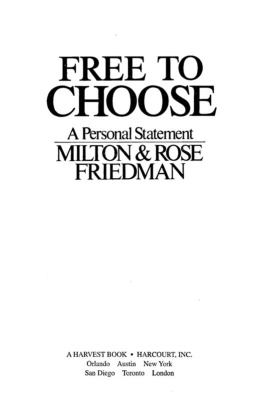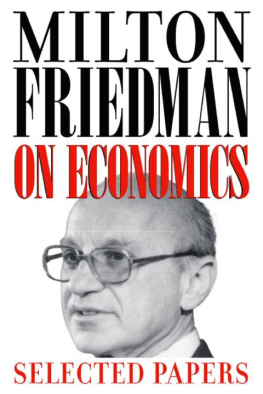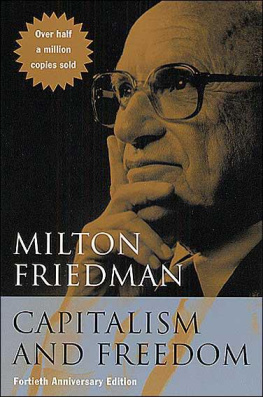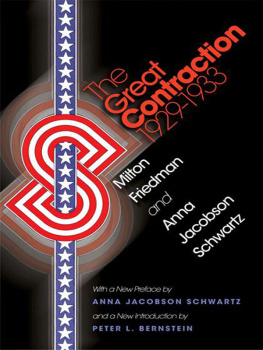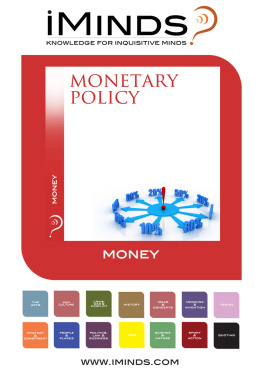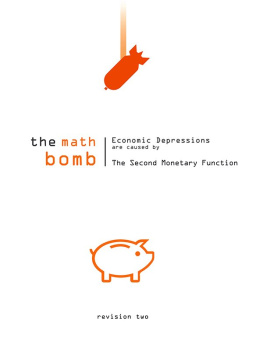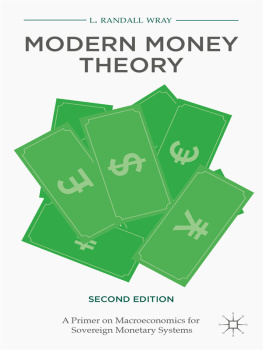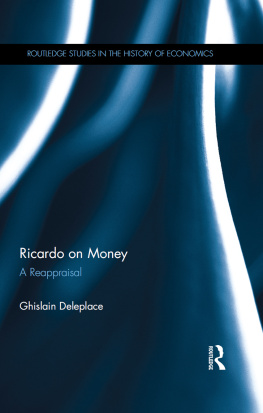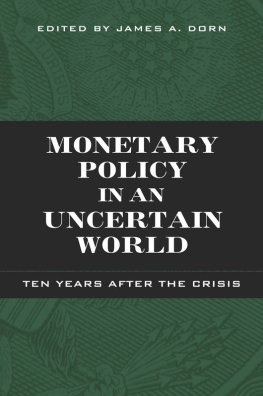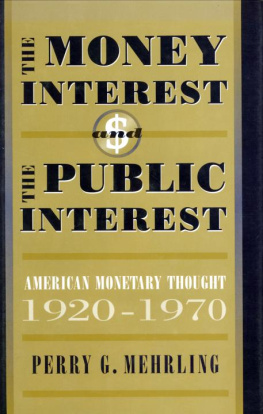Copyright 1994, 1992 by Milton Friedman
All rights reserved. No part of this publication may
be reproduced or transmitted in any form or by any means,
electronic or mechanical, including photocopy, recording, or
any information storage and retrieval system, without
permission in writing from the publisher.
Requests for permission to make copies
of any part of the work should be mailed to:
Permissions Department, Harcourt Brace & Company,
6277 Sea Harbor Drive, Orlando, Florida 32887-6777.
Some material previously appeared in Free to Choose by
Milton Friedman and Rose D. Friedman, copyright 1980, 1979
by Milton Friedman and Rose D. Friedman.
Some chapters first published by Journal of Political Economy,
1990; Journal of Economic Perspectives, 1990; and Monetary and
Economic Studies (Bank of Japan), 1985.
Library of Congress Cataloging-in-Publication Data
Friedman, Milton, 1912
Money mischief: episodes in monetary history/Milton
Friedman.1st ed.
p. cm.
Includes bibliographical references.
ISBN 0-15-661930-X
ISBN 978-0-15-661930-1
1. Monetary policyHistory. 2. Monetary policyUnited
StatesHistory. 3. MoneyHistory. I. Title.
HG230.3.F75 1992
332.4'6dc20 91-23760
Designed by G. B. D. Smith
Printed in the United States of America
First Harvest edition 1994
DOC 20 19 18 17 16 15 14
To RDF
and more than half a century
of loving collaboration
Preface
In the course of decades of studying monetary phenomena, I have been impressed repeatedly with the ubiquitous and often unanticipated effects of what seem like trivial changes in monetary institutions.
In the Preface to an earlier book, The Optimum Quantity of Money, I wrote: "Monetary theory is like a Japanese garden. It has esthetic unity born of variety; an apparent simplicity that conceals a sophisticated reality; a surface view that dissolves in ever deeper perspectives. Both can be fully appreciated only if examined from many different angles, only if studied leisurely but in depth. Both have elements that can be enjoyed independently of the whole, yet attain their full realization only as part of the whole."
What is true of monetary theory is equally true of monetary history. Monetary structures that, looked at from one angle, appear bizarre, when looked at from another are seen to be simply unfamiliar versions of structures we take for granted, almost as if they were part of the natural world. The first chapter of this book is a striking example: stone money and gold money are so alike that they might be found in the same quarry.
That brief chapter having, I hope, intrigued you by illustrating how misleading surface appearances can be in dealing with monetary phenomena, the second chapter sketches the essence of monetary theory in simple terms. It provides a background for appreciating the historical episodes that follow.
The next three chapters tell true stories of seemingly minor events that have had far-reaching and utterly unanticipated effects in history. Chapter 3 tells how the seemingly innocent omission of one line from a coinage law came to have major effects on both the politics and the economics of the United States over several decades; chapter 4 provides the empirical underpinning for those conclusions; and chapter 5 tells how the work of two obscure Scottish chemists destroyed the presidential prospects of William Jennings Bryan, one of the most colorful and least appreciated politicians of the past century.
Following this examination of historical episodes, chapter 6 examines a great issuebimetallismthat played a major role in the events described in chapters 3, 4, and 5. A recent writer describes bimetallism as giving rise "from the mid-1860s to the mid-1890s [to] the liveliest theoretical disputes among economists and the sharpest economic policy debates in the 'civilized world'" (Roccas 1987, p. 1).
Chapter 6 contends that conventional wisdom about the merits and demerits of bimetallism as a monetary system is seriously mistaken. My focus is narrow: it is to compare bimetallism as a system with monometallism. It is not to maintain that the United States, or any other country, should seek under current conditions to institute a bimetallic system. Indeed, to try to do so would conflict completely with my belief that (as Walter Bagehot pointed out more than a century ago) monetary systems, like Topsy, just grow. They are not and cannot be constructed de novo. However, as is exemplified by "the crime of 1873," they can be altered and affected in all sorts of ways by deliberate actionwhich is why an understanding of monetary phenomena is of much potential value.
These four chapters, then, all deal with many of the same events looked at from different points of view.
Chapter 7 returns to a particular historical episode, the effects of the U.S. silver purchase program of the 1930s. It seems fantastic that the decision of President Franklin Delano Roosevelt to placate a few senators from western states could have contributed in any detectable way to the triumph of communism in far-off China. Yet the sequence of events by which it did is clear and unmistakable, and the early steps were clear even to those contemporary observers who had some understanding of basic monetary theory.
The final step in the sequence to which the U.S. silver policy contributed was hyperinflation, an extreme form of a disease that has stricken many countries over the course of millennia. Chapter 8 examines the cause and cure of, inflation, using recent and historical data for a number of countries to illustrate its central thesis: that inflation is always and everywhere a monetary phenomenon.
Chapter 9 is a testament to the role of chance on the effect of monetary changes. What happened in the United Statesand it was completely outside the range of influence of the policymakers in Chile and Israelhad the effect of rendering one set of policymakers in one of those countries villains, while another set of policymakers in the other country became heroes.
Chapter 10 explores the probable consequences of the monetary system that now prevails throughout the worlda system that has no historical precedent. Since the time when President Richard Nixon broke the final tenuous link between the dollar and gold in 1971, no major currency, for the first time in history, has any connection to a commodity. Every currency is now a fiat currency, resting solely on the authorization or sanction of the government.
The final chapter is an epilogue that draws a few general lessons from the episodes examined in the preceding chapters.
This book provides only small glimpses at the endlessly fascinating monetary gardens that have flourished and decayed in the course of the several millennia since the day when mankind found it useful to separate the act of sale from the act of purchase, when someone decided it was safe to sell a product or service for somethinga something that he had no intention of consuming or employing in production but, rather, intended to use as a means to purchase another product or service to be consumed or employed in production. The "something" that connects the two transactions is called money, and it has taken innumerable physical formsfrom stones to feathers to tobacco to shells to copper, silver, and gold to pieces of paper and entries in ledger books. Who knows what will be the future incarnations of money? Computer bytes?
Earlier versions of some chapters of this book have been published separately: chapters 3 and 4 in the Journal of Political Economy (December 1990), chapter 6 in the Journal of Economic Perspectives(Fall 1990), chapter 7 in the Journal of Political Economy
Next page
